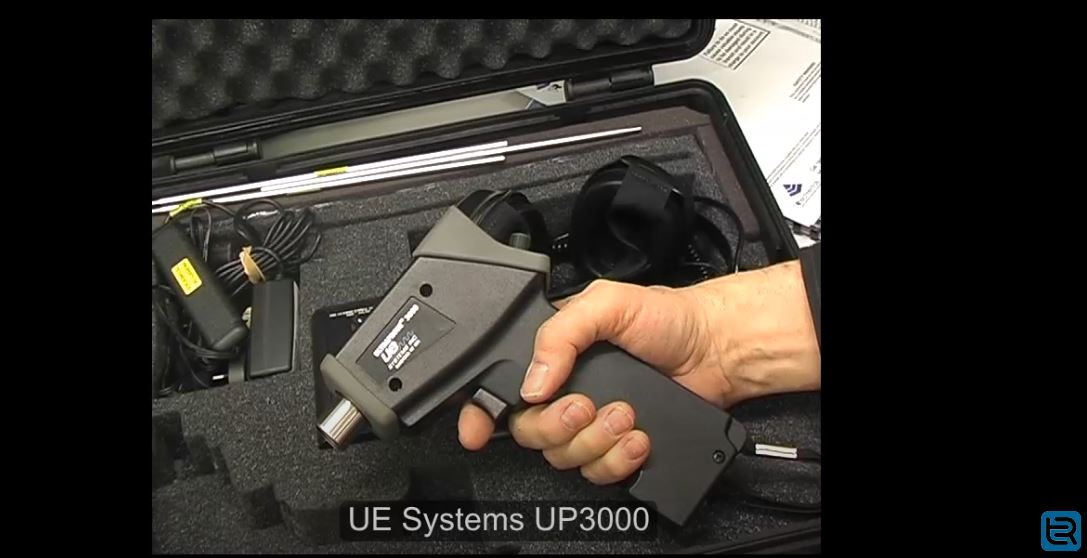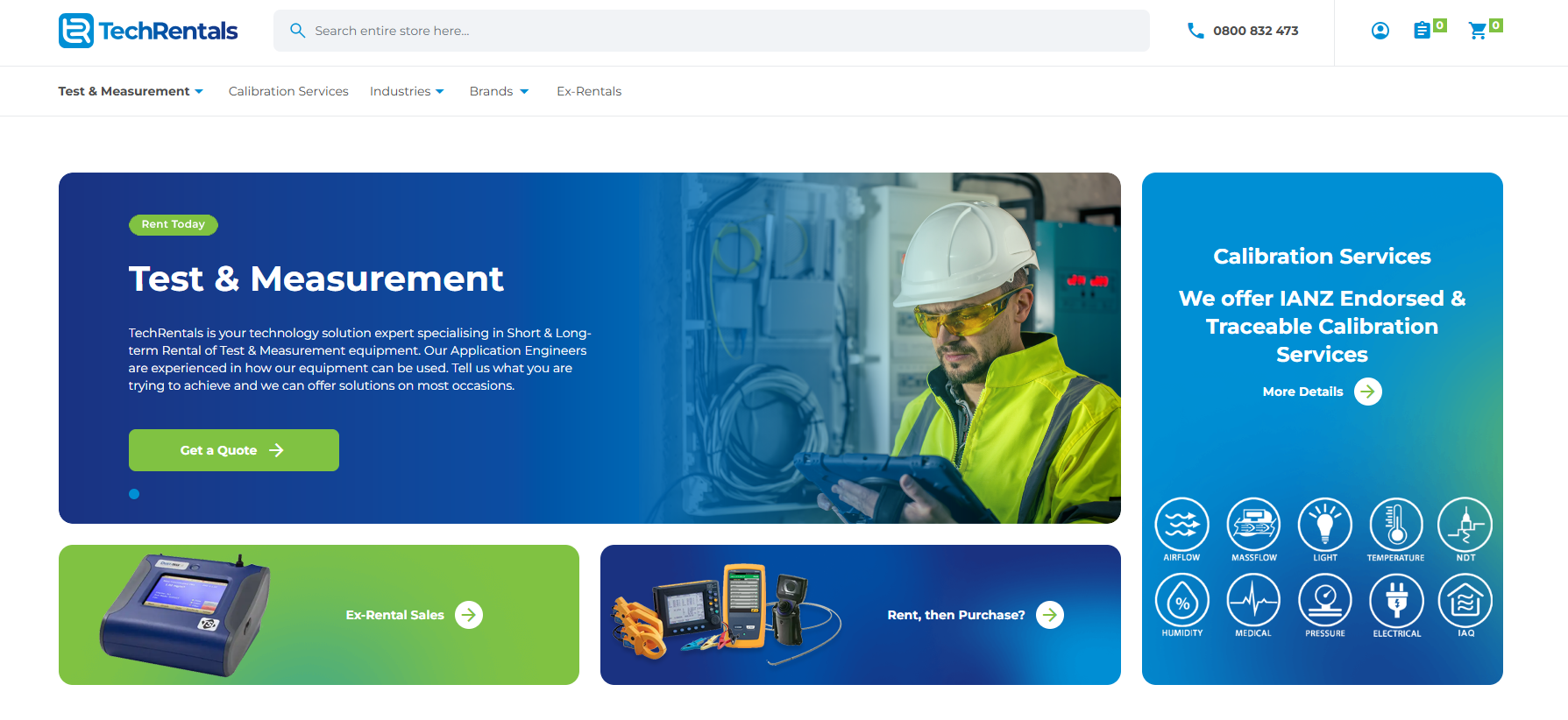Using a Fluke Ti20 Thermal Imager and a Fluke 975V AirMeter™ test tool, customers protect their servers by monitoring environments in rented data centers.
The international law firm depicted in this story owns no data centers, despite the large amount of data it stores and retrieves. Like many other high- tech companies, it rents space for its servers in data centers owned by others. “The sites we use are just hosts,” says the law firm’s data center support analyst. “The racks we have there are ours, but we rent the environment, power and the bandwidth.” Each of the firm’s offices has one or two racks of servers in a local data center to service that site’s needs. In addition, the company has a centralized U.S. server location, a secondary cen- ter for backup and redundancy, and plans for new locations overseas.
Fluke Instruments Used
At present, the analyst uses two Fluke instruments to monitor the firm’s data centers and the status of its servers in those centers: The Fluke 975 AirMeter can record ten fundamental param- eters associated with indoor air quality. Of special importance to data centers are air temperature, relative humidity, and airflow (air velocity). Since servers generate considerable heat, they must be cooled to manufacturer-specified temperatures and subjected to no more than 45 to 50 percent relative humidity.
The Fluke Ti20 Thermal Imager makes two-dimensional representations of the surface temperatures of objects in an infrared image. The support analyst uses the Ti 0 to monitor data centers for general cool- ing efficiency and to inspect law firm’s servers in those centers. Software that comes with the imager allows him to change key parameters, optimize images, and extract maximum details from collected data.
Problems and solutions
As the law firm seeks to expand its data handling capabilities, the biggest problem the support analyst faces is that data centers lack the required power and cooling capabilities to support new technologies. “We want to take advantage of the latest blade servers, but it’s difficult to find data centers that can support them,” he says. “Blade servers are much more efficient [than traditional servers]. We can pack six or seven virtual servers onto a single blade. An enclosure or rack holds eight blades but each full enclosure requires a lot of power. Many data centers simply can’t supply that power. They want us to use an older technology so they can support our needs.” Blade servers also produce considerable heat and require more cooling than many cen- ters can supply.
In such cases, the analyst uses the Fluke Ti 0 and Fluke 975 to:
- map cool- ing patterns in data centers,
- find faulty cooling arrangements and
- determine when cooling, air flow and air temperatures are inadequate to guard against breaches of server warranties.
Mapping cooling patterns allows company personnel to see the overall effects of cooling within a data center. This may seem like a duplication of effort, since data centers themselves monitor the environmentals— power, air, humidity, cooling, etc. However, “our primary use for these tools is to check what we are told by the data centers,” the anayst says. “Then, if necessary, we can suggest corrective meaings to keep our servers functiong efficiently.” The support analyst cites the local data center as an example: The way the room is set up right now greatly restricts the air flow going to some of the devices positioned across the room from the air-conditioning unit. Using Ti20, we were able to take perature readings of surfaces ach area of the room. Then, g those readings, we able were to plot out where the cool air travels. We found that while one area of the room is cold, as we worked our way around room, areas were gradually warmer and warmer.” He says that the Fluke 975 Air Meter used in conjunction with the Ti20 allowed for a more in-depth analysis of the local data center: “Temperature and humidity readings indicated that the hot air that should be exhausted from the room is actu- being dumped back into the room in an endless cycle. The conditioner cools itself down and shuts off. But the circulation fans keep working. They actually kick the hot air back into the room. Overall, it’s a very poorly designed room. We’re looking to the data center to restructure the cooling system.” Finding faulty cooling arrangements for the law firm’s servers is another of the analyst’s uses for the Ti20. “Because of the cooling requirements for blade servers, we have been using the Ti20 to monitor the temperatures of the air flowing into the fronts and out the backs of our blade racks,” he says.
A common problem experienced by their blade servers is hot air entering the front of the blades. Only cooling air should be entering the rack fronts. Two situations that lead to this problem are
- missing blanks on empty rack slots and
- server aisles set up with servers arranged front to back.
The first situation usually occurs because a user of the data center does not need all eight slots in a rack or because the data center lacks the capability to provide power to a full rack. In either case, there are empty slots. Blanking panels should cover those unused slots so that they are not open to the environment. The analyst says that he has documented instances of missing blanking panels at the firm’s secondary center. “There were empty spaces on the top four slots,” he says. “Nobody could believe it, but hot air from the backs of the servers was circu-lating over the tops of the racks and coming right back in the front. That greatly increased the temperature of the blades and decreased their efficiency. We needed to fill the tops of those racks with blanking plates.” The best strategy for a data center—especially a data center with blade servers—is to install servers back-to-back in rows facing the fronts of servers in adjacent rows. This creates alternating cold aisles and hot aisles. “A lot of data centers are set up with one row of servers after another—back to front, back to front, back to front,” he says dis- approvingly. “The hot air from one row of servers blows onto the fronts of the next row, and that’s continued throughout the center. In Europe, we are looking for a center with alternating hot and cold aisles.”
Safeguarding server warranties is the analyst’s principal impetus for monitoring the law firm’s servers. “Our blade manufacturer has a recommended maximum temperature that servers can reach. If a server gets above that threshold, it is no longer covered under our warranties and contracts. That would be a huge problem for us.” Because of these warranty considerations, company personnel need to verify what data center owners tell them about the cooling in their facilities. And while the blades themselves have internal monitors that track their temperatures, the analyst needs know how effectively the cooling supplied by the data center is doing the job. He uses the Ti20 to collect thermal images of the fronts of the blades to determine the temperature of the air flowing in. Then, he compares this temperature to the temperature of the air coming out the back of the rack. Finally, he compares these temperatures to the blade manufacturer’s recommended temperature threshold for the servers. “If necessary,” he says, “we can go back to a data center’s owners and say, ‘This is the air- flow that you are telling us we’re getting, and this is what we see. You’re not meeting our require- ments. We need you to upgrade your systems to make sure you meet our specifications.’”
Additional capabilities with the Fluke 975 The Fluke 975 AirMeter allows the analyst to precisely measure air temperatures and convert the air-meter data into reports for superiors or data center operators. Using the Ti 0 Thermal Imager and the 975 AirMeter together “provides results from different angles,” he says. “If we use the imager to reveal the sur- face temperatures, then we can use the airflow meter to register the actual temperature of the air going into racks.” The 975 AirMeter also mea- sures relative humidity (RH) and airflow. Excessive humidity in a data center can lead to condensation on equipment and places an undue load on the air-conditioning system. RH readings played a significant role in uncovering difficulties at the local data center. Regarding airflow, “In our primary and secondary data centers, the air comes in through the floors,” he says. “We can use the air- flow sensor on the 975 to make sure that airflow is at the rate required by our servers.”
Creating tracking database
The analyst’s job includes creat ing and maintaining tracking databases. To do this, he periodically uses the Ti 0 to make images at specific points in the primary and secondary data centers. He then logs the data into the database for review as necessary. “We can graph the data for each location and see if the temperature is rising, falling or staying the same over time,” he explains. Equipment frequently moves within data centers, as clients expand their server capacity or stop using the center altogether. If the law firm brings a new piece of equipment into a data center or reacts to a temperature problem by moving an existing server, the tracking database allows them to assess how the change affected ambient temperatures. From such findings, the support analyst, in cooperation with data center personnel, can determine when the center needs more cooling or when equipment is packed in too densely. In general, the database lets the law firm and data center personnel pinpoint areas where the air is more or less cool or where there is more or less airflow. The analyst speculates that as he becomes more familiar with the 975 AirMeter and its data logging capabilities, it will play a greater role in his tracking databases.
Fluke. Keeping your world up and running.®
Fluke Corporation PO Box 9090, Everett, WA USA 98 06 Fluke Europe B.V. PO Box 1186, 560 BD Eindhoven, The Netherlands For more information call: In the U.S.A. (800) 443-5853 or Fax (4 5) 446-5116 In Europe/M-East/Africa +31 (0) 40 675 00 or Fax +31 (0) 40 675
In Canada (800)-36-FLUKE or Fax (905) 890-6866 From other countries +1 (4 5) 446-5500 or Fax +1 (4 5) 446-5116 Web access: http://www.fluke.com
© 007 Fluke Corporation. All rights reserved. Specifications subject to change without notice. Printed in U.S.A. 5/ 007 3034678 A-EN-N Rev A



